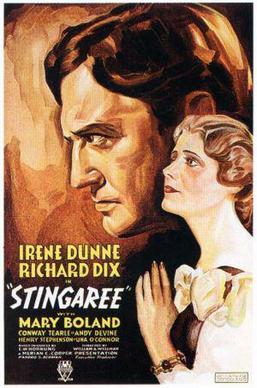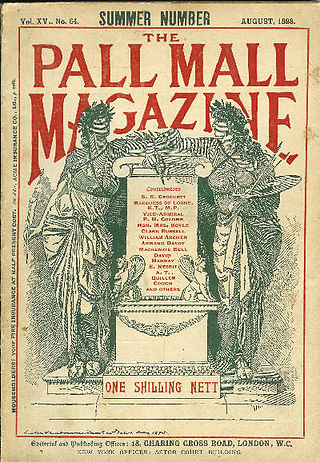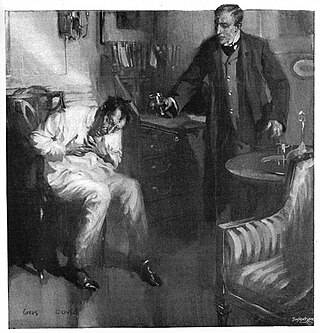
Bushrangers were originally escaped convicts in the early years of the British settlement of Australia who used the bush as a refuge to hide from the authorities. By the 1820s, the term had evolved to refer to those who took up "robbery under arms" as a way of life, using the bush as their base.

A. J. Raffles is a British fictional character – a cricketer and gentleman thief – created by E. W. Hornung. Between 1898 and 1909, Hornung wrote a series of 26 short stories, two plays, and a novel about Raffles and his fictional chronicler, Harry "Bunny" Manders.

Ernest William Hornung was an English author and poet known for writing the A. J. Raffles series of stories about a gentleman thief in late 19th-century London. Hornung was educated at Uppingham School; as a result of poor health he left the school in December 1883 to travel to Sydney, where he stayed for two years. He drew on his Australian experiences as a background when he began writing, initially short stories and later novels.

Henry Christopher Bailey was an English author of detective fiction.
Julian Osgood Field (1852–1925) was an American socialite and writer. Some of his works were published under the pseudonyms X.L. or Sigma.

H. G. Wells was a prolific writer of both fiction and non-fiction. His writing career spanned more than sixty years, and his early science fiction novels earned him the title of "The Father of Science Fiction".

Stingaree is an American pre-Code romantic drama film directed by William A. Wellman released by RKO Radio Pictures in 1934. The film was based on a 1905 novel by Ernest William Hornung. Set in Australia, it stars Irene Dunne as Hilda Bouverie and Richard Dix as Stingaree. Hollywood had previously filmed the Hornung story as serials in 1915 and 1917, starring True Boardman.
Stingaree is a 1915 American drama film serial, set in Australia, directed by James W. Horne. It was followed by a sequel The Further Adventures of Stingaree.

"The Criminologists' Club" is a short story by E. W. Hornung, and features the gentleman thief A. J. Raffles, and his companion and biographer, Bunny Manders. The story was published in March 1905 by Collier's Weekly in New York, and in April 1905 by Pall Mall Magazine in London. It was also included as the fourth story in the collection A Thief in the Night, published by Chatto & Windus in London, and Charles Scribner's Sons in New York, both in 1905.

The Pall Mall Magazine was a monthly British literary magazine published between 1893 and 1914. Begun by William Waldorf Astor as an offshoot of The Pall Mall Gazette, the magazine included poetry, short stories, serialized fiction, and general commentaries, along with extensive artwork. It was notable in its time as the first British magazine to "publish illustrations in number and finish comparable to those of American periodicals of the same class" much of which was in the late Pre-Raphaelite style. It was often compared to the competing publication The Strand Magazine; many artists, such as illustrator Sidney Paget and author H. G. Wells, sold freelance work to both.
The Wonderful Story is a 1922 British drama film directed by Graham Cutts and starring Lillian Hall-Davis, Herbert Langley and Olaf Hytten.

Captain Midnight, the Bush King is a 1911 Australian silent Western film about the fictitious bushranger Captain Midnight. It was the directorial debut of actor Alfred Rolfe. The film is based on the play of same name by W. J. Lincoln and Alfred Dampier. Captain Midnight, the Bush King is now considered lost.

Bushranger's Ransom, or A Ride for Life was an Australian silent film produced by Pathé Frères' in 1911, their first motion picture production in Australia after establishing a branch office in Sydney in April 1910. It was adapted from a stage play first performed in 1907 by E. I. Cole's Bohemian Dramatic Company.
Arthur Wright was an Australian writer best known for his novels set against a background of the sporting world, particularly horseracing, which meant he was often compared during his lifetime to Nat Gould. In his lifetime he was called "Australia's most prolific novelist".
The bushranger ban was a ban on films about bushrangers that came in effect in Australia in 1911–12. Films about bushrangers had been the most popular genre of local films ever since The Story of the Kelly Gang (1906). Governments were worried about the influence this would have on the population and bans against films depicting bushrangers were introduced in South Australia (1911), New South Wales and Victoria (1912).

A Bride from the Bush is the first novel written by E. W. Hornung. He started writing the book while working as a tutor for Charles Joseph Parsons in Mossgiel Station, New South Wales, Australia. The novel was initially published by Smith, Elder & Co. as a serial in the Cornhill Magazine, and then published in book format by the same company in October 1890. As with Tiny Luttrell and The Unbidden Guest, two of Hornung's other early novels, A Bride from the Bush points out flaws in British society by presenting the country through an Australian perspective. A reviewer from The New York Times called the novel "a most piquant contrast between civilization and crudity". The writer Thomas Alexander Browne called the titular character of A Bride from the Bush "a libel to Australian womankind". A Punch editor made the opposite claim, arguing that the protagonist of the novel is more kind-hearted and attractive than actual Australians.

Edward Irham Cole was an Australian theatrical entrepreneur and film director whose productions represented a synthesis of Wild West show and stage melodrama. He managed a theatre company, called the Bohemian Dramatic Company, that performed in semi-permanent and temporary tent theatres. During 1910 and 1911 Cole directed a number of silent films, adapted from his stage plays and using actors from his theatre company.

"Le Premier Pas" is a short story by E. W. Hornung, and features the gentleman thief A. J. Raffles, and his companion and biographer, Bunny Manders. The story was first published as the fourth story in the collection The Amateur Cracksman, published by Methuen & Co. Ltd in London, and Charles Scribner's Sons in New York, both in 1899. This and "Wilful Murder" were the two stories in the collection not published previously in magazine format.

"A Bad Night" is a short story by E. W. Hornung, and features the gentleman thief A. J. Raffles, and his companion and biographer, Bunny Manders. The story was published in June 1905 by Pall Mall Magazine in London. The story was also included as the sixth story in the collection A Thief in the Night, published by Chatto & Windus in London, and Charles Scribner's Sons in New York, both in 1905.














